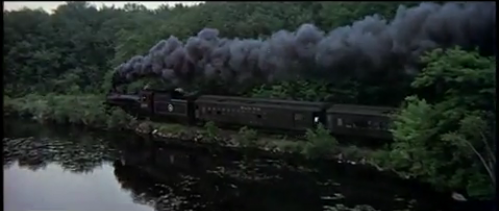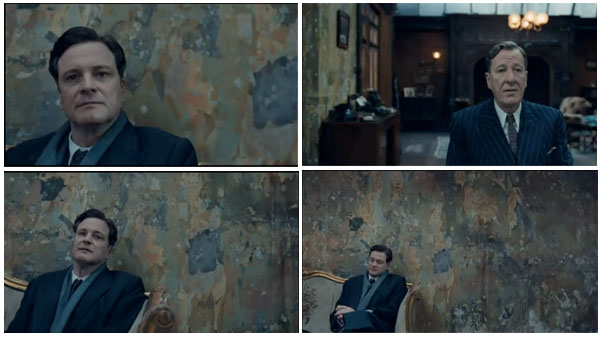
GOODFELLAS (1990, Scorsese)
The stuff I found for today’s post is awesome, complete with multi-media bonus features that really demonstrate the brilliance of Scorsese’s work here. (As with Spielberg, I could fill an entire blog just with shots by Scorsese.)
Often times when a powerful, economical staging goes down before my eyes, I ask myself, “How the hell does the brain come up with that?” With this scene, you have to wonder how much of that was in the script, how much of it was pre-conceived by the director, how much discovered on set, how much discovered in post? With this video, the killing of Stacks, and with — wait for it — the shooting script pages from this scene, we get a tiny peek behind the curtain on what went down.
Before we get too far into it, it’s best if you watch today’s entire scene first:
What Scorsese had to work with…
If you read this scene in the shooting script PDF excerpt, (it’s a page and half), you see nearly a completely different scene. It’s got the same characters and the same outcome, but the approach is entirely different. Oners are great at building suspense (see this post here ) and this one is no exception. Obviously, reading the pages for this scene, Scorsese instinctually realized that a simpler more fluid staging would be infinitely stronger than the cuts the script suggests (which isn’t always the case, of course).
Now, this opening oner is great and all, BUT it’s the genius of this scene’s CODA that blows my brains out (no offense, Stacks). So unexpected, original and fun.

Scorsese chooses to allow the tension of the first oner to play to maximum effect by not having voiceover on top of it, as the script suggests, but decides he can have his cake and eat it too, because really, there are no rules. In place of the voiceover there is Tommy/Pesci’s fantastic pocket dialogue (dialogue written or improvised to cover business).
Then, with the help of slow motion and an inspired music choice (his always are), he adds a “recap” of the killing, a coda, now letting us see the cold and crazy Tommy in this new perspective on what just went down.
Reading the script it’s not hard to imagine Scorsese thinking that the voice over was an opportunity to do something stylized and unexpected, something that would be strongly in the style and tone of the movie and elevate the scene with a real cool factor. In the script the voice over actually feels like a coda, and Scorsese takes it literally and enjoys it as such. The more I direct, the more I love and search for these clues in the script that suggest going off the well worn path.
Finally, as a button, we cut to the ol’ faithful of director’s seeking buttons to their murder scenes – the high-and-wide of the aftermath. (That’s a skinny Sam Jackson, btw.)
Hope you’ll have a quick read of the scene in shooting script form (thanks to Joe Lajeunesse for getting it to me); it’s an amazing case study of how a director like Scorsese can elevate already mighty high material, giving it a powerful, signature style.


R Poe
The thing that really makes this a gamble – and a brilliant peace of storytelling for me is that he shoots him once in the head from the first angle, but when the scene is replayed in the “Coda”, suddenly, he is shooting four times. Scorsese had to see the inconsistency of this, but ignored it for the sake of bringing this moment to his audience. Almost like he’s saying “it’s a story that’s being recounted, anyway…did he shoot once or four times? We’ll never really know”. (Maybe he’s firing four times in his own mind, even if he was told to shoot only once?)
Reminds me of the Greedo/Han controversy, as Lucas continues to revise the story over and over. Is it sloppy, or brave? It’s very deliberate, so it must simply be at the discretion of the storyteller.
R Poe
BTW, it does seem like he wanted the voice over for clarity and pacing, but didn’t want to spoil the suspense of the single take, like you are suggesting. Great post!
jsbfilm
Good one, Rob. I’ve seen it so many times and never bothered to count the gun shots. And what’s more, it’s an easy fix – he could have made it consistent by adding one more off-screen sound effect in the first part, but clearly CHOOSE not to – it’s deliberate. Or maybe he just liked the rhythm in both cases (“who cares, there’s no rules”). I’d never considered it and think it’s great that you brought it up, the difference between “reality” and “recounted story” – that has to be a theme of the whole movie.
Mark Rakocy
Right after the initial head shot, he cuts to the guy in the doorway and you hear (but don’t see) 3 more shots. They’re kinda muffled from the silencer but definitely gunshots, you even hear the shell casing hitting the floor.
jsbfilm
Agreed, but key-rekt me if I’m wrong, there’s total 4 shots in the scene and 5 shots in the “coda.” (What a piece of shit! I’ll never watch this garbage film again.)
Jeremy Cole
Your point about the power of oners makes me think that cutting from a master shot in film is a little like blinking in a staring contest. It releases tension. When we see one, I think it subconsciously sets an expectation in our minds that we’re going to see an unfiltered look at events – verite style – and that we’re not going to be able to look away. In a scene like this, it makes us squeamish because we feel the impending hit and we instinctively know we’re not going to be able to cut away to a more comfortable point of view (not that we articulate that to ourselves but we feel it).
Funny that cutting back and forth between two shots like, say, two trains approaching each other head on builds tension for the same yet opposite reason. It forces us away from the comfort of a single POV into the discomfort of seeing what’s about to happen. A paradoxically same/different “can’t look away” type of moment.
Anywho, just the musings that came to me when I read your post…